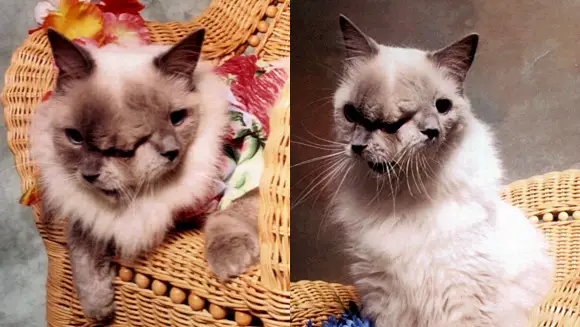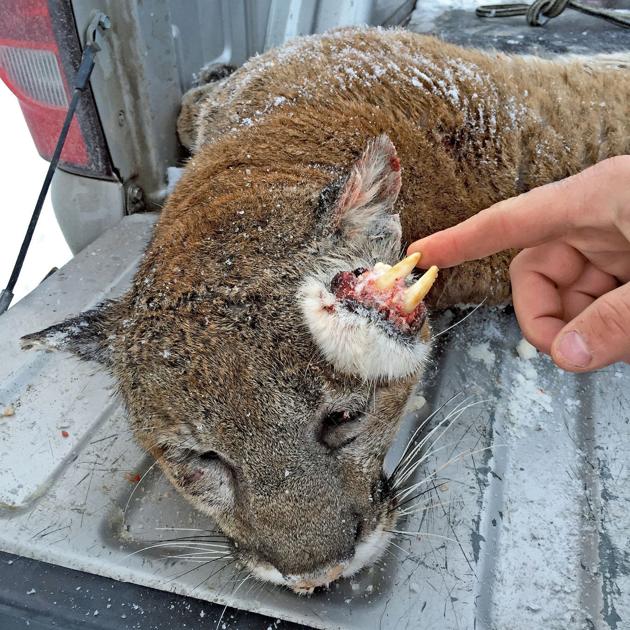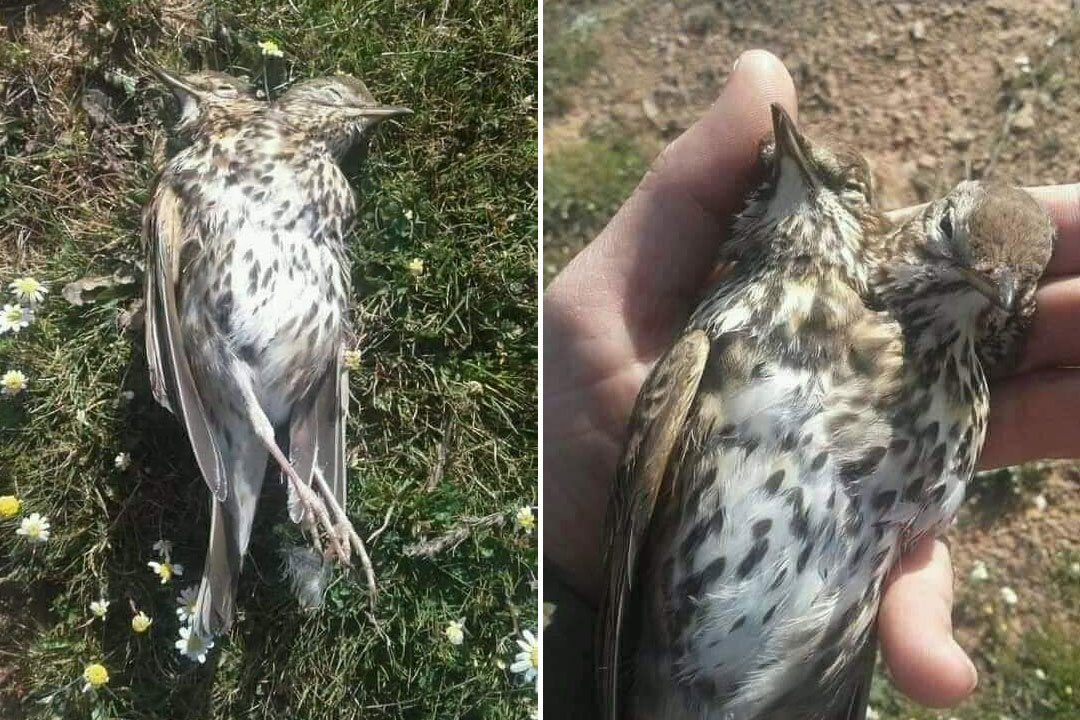Preparando (y amenazando con) las últimas entregas sobre las salamandras Ambystoma, hago una parada en una curiosidad biológica, una que nos resulta particularmente terrorífica. Me han comentado la posibilidad de hacer unos youtubes con este material, y me resulta tentadora, aunque también me da reparo poner mi imagen en ese medio, más sabiendo como sé que este tipo de contenidos no tienen mucho recorrido, hay más interés por la física y la historia que por la biología... aunque por otra parte, me apetece estar libre de las servidumbres que me ha generado la plataforma en la que estoy, y hacer algo más dinámico que entradas de blog (aparte de que el blog necesita reformas urgentes para adaptarse a una buena visualización por móvil).
Yes (two-headed animals occur), it is something that is part of the universe of my nightmares. By the way, it's called polycephaly
. These kinds of things happen because of three phenomena, genetic problems, parasitic twins, and extreme cases of siamese twins. But, to be correct, only in the first case we are speaking of an individual born with two heads, because the others refer to two siblings fused in one.
Genetic mutations
One individual, two heads fused, only one brain.
This cat lived up to 12 years:
These kind of mutations also happen, from time to time in livestock. They usually don’t live long, this calf of Kentucky made it to the headlines afther passing the one month old barrier:
Interestingly enough, the calf is portrayed in the news as a single individual while the cat is presented as two siblings cojoined. But most probably the cat was intended to be one and only individual -there never happened such “fussion” of zygotes- as the calf, because there is a mutation that can lead to this kind of head “duplication”. This phenomennom is called diprosopus
or craniofatial duplication, and it is a congenital disorder by which a single individual developes two heads. I insist, one individual, not two individual fused as happens in parasitic twins.
In vertebrates there is a gene, curiously named after Sonic the hedgehog, the SHH gene
that controls the transcription of an homonimous protein which results essential for embryonic development. This protein inhibits or promotes head development. Too little SHH protein stops the head from growing, but with too much SHH the head becomes wider until it almost divides in two, even though there is still only one brain.
It also occurs in birds, pic from wikipedia:
Of course the opposite also occurs, when the embryo is deficient in SHH it develops heads so narrow that they have only one eye, cases of cyclops. This happens through the consumption of toxic substances by the mother, as is studied in cattle. In humans, there are trisomies like trisomy 18
that have a tendency to produce this effect.
The parasitic twin[1]
Two individuals, one of them not developed, two heads.
From a biologist standpoint it is frightening but also fascinating the challenge of understanding what drives the development of two beings when they merge into one in the womb.
This strange situation resembles the phenomenon of chimerism[2][3] in that two siblings merge into one in their intrauterine development, or in the egg when we talk about birds. But in this case the fusion occurs much later than in chimerism, when they are already much more than a handful of cells both.
The result is one of the sibling dies and is absorbed by the living one, and when the surviving is born, they carries their much smaller dead sibling (often only parts of them) somewhere in their body. The absorbed twin can be reduced to a stem with some extra limbs or limbs, or... yes, it has happened, a complete or partial head.
Ever wanted to see a four legged chicken?, me too. It is a fascinating pic, isn’t it?
https://i.redd.it/thmu4iymoxf61.jpg
Howver it is not easy to find images of -non human- animals that are born with an entire head of their absorbed sibling in their body. But there some cases registered in humans.
I have to warn about this image. It is very hard to see this kind of things even for who's used to talk about these things:
This image went around the world in 2005. A surgery was performed to free this poor girl from her Siamese sister's head, and she survived. Tell me now what ethical dilemma would prevent the removal of this head and the ending of the remaining life of the undeveloped sister. Because sometimes you have to make things that clear.
Well, why was the sister's entire head developed, but not her body? We don't know yet. To this day, if one of these cases occurs, we don't know to what extent the parasitic twin (poor thing) develops some part of her body and not others. And this field of research is… empty and needed.
There are many more cases you can find in the net with a quick search of two headed newborns (I warn you again, the images are quite disturbing). But bellow I show a case that went viral, a cougar that was shot dead in Idaho exhibiting the upper jaw of a parasitic twin in his head. I can’t even imagine what kind of pain could feel this animal while living. While not being a complete head, I share this here just to show that the extent to which the parasitic twin develops both unpredictable.
Extreme Siamese
In this case both siamese siblings are developed, the embryonic/fetal development is carried out (even into an egg) in such a way that both beings with two different brains share practically the whole body except for the head and part of the respiratory and digestive tracts.
Source of the image: 'Two-headed' Song Thrush in Syria causes controversy
Notice the difference with the two headed bird bellow? yes, in this case both heads are totally differentiated, independient, and there are two different brains.
In this case the embryonic/fetal development is carried out (even into an egg) in such a way that both beings with two different brains share practically the whole body except for the head and part of the respiratory and digestive tracts.
Also, there is a least one documented (and also very known case) in humans, Abby and Brittany Hensel
. I have to insist here that they are two different people.
Finally, maybe this phenomenom is what inspired some heraldic beasts:
Some useful links:
Footnotes
[2] Chimera (genetics) - Wikipedia[5] Pin on ODD AND STRANGE PICS






que bueno que te metieras en este lio irenita, a mi me sorprendió mucho cuando empezaron a salir las primeras tomografías de humanos siameses que compartían áreas extensas de cerebro pero la personalidad permanecía intacta (o al menos eso parece)... en mi mano he tenido serpientes de dos cabezas, tortugas de acuario (las Trachemys scripta pero la subespecie comercial, la de florida) el resto solamente lo he visto en conservación en jarras por ejemplo
ResponderEliminarHay un fenómeno más común de lo que la gente piensa que son los teraromas, tengo entendido que aún se maneja la idea de un hermano "parásito"... a una tía política (en paz descanse) le sacaron uno, el médico que la atendió comentó que no solamente tenía pelos, algo de uñas y dientes, sino que reaccionaba a estímulos
me encantó tu escrito
Jan
Muchas gracias Jan!
EliminarComo siempre me llaman la atención varias cosas de tu comentario, que no sabes cuánto agradezco. La primera es la de la personalidad diferente de los siameses con extensas áreas de cerebro compartido... lo que nos lleva al debate de dónde está la personalidad :)
Lo de las serpiente que has tenido en la mano, a mi me daría pena, es una condena casi segura a muerte antes de llegar a la vida adulta. Bueno, la naturaleza es así...
Sobre los teratomas, ¿por qué unos se desarrollan a partir de determinada edad?... hormonas?, el sistema inmune los mantiene a raya hasta que baja su capacidad?
En fin, preguntas, preguntas :D